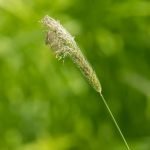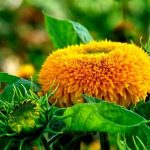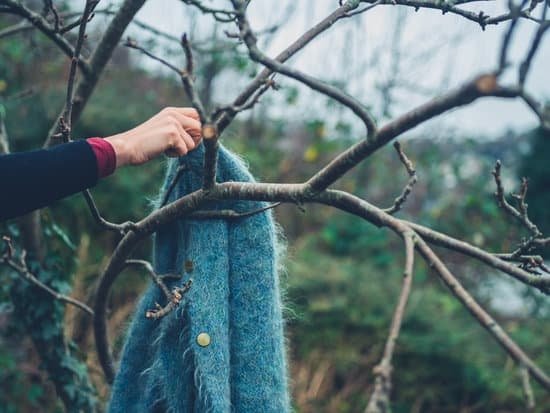Container gardening is a popular and convenient option for those with limited outdoor space or looking to add greenery to their homes. In this article, we will explore simple container gardening ideas to help you get started on your own small-scale garden. From choosing the right containers to selecting the perfect plants, we’ll cover all the basics to help you create a thriving and visually appealing container garden.
Container gardening involves growing plants in pots, planters, or other containers instead of directly in the ground. This method offers several benefits, including the ability to easily move your garden around, better control over soil conditions, and fewer issues with weeds and pests. Whether you’re new to gardening or simply looking for easy and straightforward ideas, container gardening can be a great option for bringing nature into your home.
When starting a container garden, it’s important to keep things simple. The goal is to create an enjoyable and manageable gardening experience without feeling overwhelmed by complexity or maintenance requirements.
With that in mind, we’ll explore various tips for choosing the right containers, selecting low-maintenance plants, essential supplies and tools needed for success, design ideas for creating visually appealing gardens, caring for your plants, space-saving vertical gardening options, as well as harvesting and enjoying the fruits of your labor.
Choosing the Right Containers
When it comes to simple container gardening ideas, choosing the right containers is crucial for the success of your garden. Here are some factors to consider and creative options to explore:
Factors to consider when selecting containers:
– Size: Ensure that the containers are large enough for the plants to grow and have proper drainage holes.
– Material: Consider the material of the containers, such as plastic, ceramic, or wood, and how they will fare in different weather conditions.
– Mobility: If you plan on moving your containers around, look for options with built-in casters or lightweight materials.
Different types of containers and their pros and cons:
1. Standard flower pots: These are versatile and come in various sizes, but they can dry out quickly in hot weather.
2. Hanging baskets: Great for vertical gardening and saving space, but they require frequent watering.
3. Grow bags: Lightweight and economical, these can be folded up for storage when not in use.
Creative and unconventional container options:
– Repurposed items: Upcycle old mason jars, buckets, or even shoes into unique planters.
– Vertical structures: Consider using old ladders or pallets as vertical planters for a creative twist.
When considering which containers to use for your simple container gardening ideas, think outside the box and get creative with your choices. Remember that any waterproof item with drainage can be repurposed into a planter.
Selecting the Perfect Plants
When it comes to container gardening, selecting the perfect plants is essential for a successful and thriving garden. Whether you’re interested in growing flowers, herbs, or vegetables, there are plenty of options that are suitable for container gardening. When choosing plants for your containers, it’s important to consider the available space and sunlight in your garden area.
For beginners, low-maintenance plant options are ideal. This includes plants that require minimal care and attention, such as succulents, certain herbs like basil and mint, and flowers like marigolds and petunias. These plants are resilient and can withstand some neglect, making them perfect for those who are new to container gardening.
In addition to low-maintenance plants, it’s also important to consider the size of the mature plant when selecting species for your containers. Some plants can quickly outgrow their containers which can result in stunted growth or root-bound plants. Choose varieties that are well-suited for the size of your containers and won’t overcrowd or overshadow other plants.
Overall, when it comes to selecting the perfect plants for your container garden, simplicity is key. Look for easy-to-care-for options that will thrive in your specific growing conditions. By choosing the right plants based on available space, sunlight requirements, and maintenance needs, you can ensure a beautiful and bountiful container garden that will bring joy and satisfaction throughout the growing season.
By focusing on simple container gardening ideas when selecting your plants, you can create a hassle-free and enjoyable gardening experience while reaping the rewards of a stunning container garden filled with vibrant blooms and delicious edibles.
Essential Supplies and Tools
When it comes to container gardening, having the right supplies and tools can make all the difference in ensuring your plants thrive. Choosing the best containers and plants is important, but without the essential supplies and tools, your gardening efforts may not yield the desired results. In this section, we will discuss the must-have items for successful container gardening, tips for selecting quality potting soil and fertilizers, as well as creative and budget-friendly DIY options.
Must-Have Tools and Supplies
One of the essential tools for container gardening is a watering can with a narrow spout, which allows for precise watering without soaking the entire plant or container. A small hand trowel or garden scoop is also necessary for planting and transplanting in containers. Additionally, a good pair of pruning shears will come in handy for trimming and maintaining your plants.
In terms of supplies, high-quality potting mix is crucial for healthy plant growth. Look for mixes specifically formulated for container gardening, as they provide excellent drainage and aeration. Fertilizers are also important for feeding your plants throughout their growing season. Consider using slow-release fertilizers or organic options to promote long-term plant health.
Tips for Selecting Quality Potting Soil and Fertilizers
When choosing potting soil for your containers, opt for a mix that is lightweight, well-draining, and rich in organic matter. Avoid using traditional garden soil, as it tends to compact in containers and hinder root growth. Look for potting mixes labeled as “soilless” or “container mix” at your local garden center.
As for fertilizers, consider using a balanced, water-soluble formula that is suitable for both indoor and outdoor container plants. Follow the instructions on the packaging carefully to avoid over-feeding your plants. Organic fertilizers such as compost tea or fish emulsion are also great options for providing nutrients to your container garden naturally.
Creative and Budget-Friendly DIY Container Gardening Supplies
For those who enjoy getting crafty, there are numerous DIY container gardening supplies that can be made at home without breaking the bank. Repurposing items such as mason jars, tin cans, wooden crates, or even old furniture into unique containers adds character to your garden while reducing waste.
Creating homemade biodegradable seed starter pots from newspaper or cardboard toilet paper rolls is an eco-friendly way to start your seeds before transplanting them into larger containers. Another idea is to build a simple trellis from wooden stakes and twine to support climbing plants like tomatoes or cucumbers in your containers.
By investing in must-have tools and supplies while getting creative with budget-friendly DIY options, you can set yourself up for success when starting a container garden with
Design and Layout Ideas
When it comes to container gardening, the design and layout of your garden can make a big difference in its overall appearance and success. One of the key simple container gardening ideas is to consider the visual appeal of your garden by incorporating different heights, textures, and colors for an aesthetically pleasing garden. This can be achieved by using a variety of containers, including hanging baskets, tall pots, and low planters to create an interesting and dynamic display.
Another simple container gardening idea for design and layout is to arrange your containers in a way that maximizes their impact. Placing larger or taller containers at the back of your display and smaller or trailing plants towards the front can create depth and interest. Additionally, clustering different containers together can create a cohesive look while still showcasing individual plants.
Furthermore, when designing your container garden, it’s important to consider how the plants will grow over time. Be mindful of spacing between plants to allow for proper growth without overcrowding. You may also want to consider incorporating trellises or other support structures for climbing plants. These simple container gardening ideas for design and layout will ensure that your garden not only looks great initially but continues to thrive as the plants mature.
| Container Gardening Idea | Description |
|---|---|
| Incorporating Different Heights, Textures, and Colors | This idea involves using a variety of containers to create an interesting and visually appealing garden display. |
| Maximize Impact with Arrangement | Arranging larger containers at the back and smaller ones towards the front creates depth and interest. |
| Consider Plant Growth Over Time | Mindful spacing between plants allows for proper growth without overcrowding as they mature. |
Care and Maintenance Tips
Once you have set up your container garden, it’s important to know how to properly care for and maintain it. Watering and feeding schedules are essential for the health of your plants. In general, containers tend to dry out faster than traditional garden beds, so it’s important to water them regularly, especially during the hot summer months. Using a moisture meter can help you determine when your plants need watering.
In addition to regular watering, fertilizing is also crucial for container gardens. Quality potting soil should provide nutrients for the first few weeks, but after that, you may need to supplement with a balanced liquid fertilizer every couple of weeks during the growing season.
Pests and diseases can also be a problem in container gardens. Common pests include aphids, spider mites, and whiteflies. To prevent these pests from infesting your plants, inspect them regularly and remove any affected leaves or insects. Additionally, consider using natural pest control methods such as introducing beneficial insects like ladybugs or using insecticidal soap.
Care and Maintenance Tips
Once you have set up your container garden.
Space-Saving Vertical Gardening
Innovative Ways to Maximize Limited Space
For individuals living in urban areas or with limited outdoor space, vertical gardening can be a game-changer. By utilizing vertical space such as walls, fences, or even hanging planters, you can maximize the number of plants you can grow in a small area. This allows you to still enjoy the benefits of gardening without needing a large plot of land.
DIY Vertical Garden Ideas
There are many creative and budget-friendly options for creating a vertical garden. Some popular ideas include using hanging containers, trellises, wall-mounted planters, or even repurposing items like shoe organizers or old wooden pallets. These DIY solutions not only help save space but also add an interesting visual element to your outdoor space.
Advantages of Vertical Gardening for Small Urban Spaces
Vertical gardening not only maximizes limited space but also offers other advantages for those living in urban areas. It can help improve air quality, provide insulation from noise pollution, and even create privacy barriers in compact outdoor spaces. Additionally, vertical gardens can add a touch of greenery and beauty to otherwise dull walls and balconies. With these simple container gardening ideas, anyone can experience the joy of growing their own plants regardless of available space.
Harvesting and Enjoying the Fruits of Your Labor
In conclusion, container gardening offers a convenient and versatile way to enjoy the benefits of gardening, even in limited spaces. The key to successful container gardening lies in choosing the right containers, plants, supplies, and tools. By following simple container gardening ideas, you can create a visually appealing and productive garden that brings joy and satisfaction.
When it comes to selecting the perfect plants for your container garden, consider low-maintenance options for beginners. Flowers, herbs, and vegetables that thrive in containers include marigolds, basil, cherry tomatoes, and peppers. In addition to the plant selection, creating an aesthetically pleasing design with different heights, textures, and colors is essential for maximum impact.
Careful maintenance is crucial for the success of your container garden. This includes regular watering and feeding schedules, as well as being attentive to common pests and diseases that may affect your plants.
Lastly, when it comes time to harvest your efforts from your container garden, you’ll be rewarded with a bountiful supply of fresh produce and beautiful flowers and herbs that can be used for home decor or cooking – truly allowing you to enjoy the fruits of your labor. With these simple container gardening ideas in mind, you can cultivate a therapeutic hobby that brings nature’s beauty into your everyday life.
Frequently Asked Questions
How Do You Start a Container Garden for Beginners?
Starting a container garden for beginners involves choosing the right containers, selecting the appropriate potting mix, and deciding on suitable plants for the space available. It’s important to consider the sunlight, water, and drainage needs of the chosen plants.
How Do I Make My Container Garden Look Nice?
Making your container garden look nice can be achieved by using a variety of plants that have different colors, textures, and sizes to create visual interest. Incorporating decorative elements like ornamental planters, trellises, or garden sculptures can also enhance the overall appearance of the container garden.
What Is the Rule of Thumb for Container Gardening?
The rule of thumb for container gardening is to make sure that the containers have proper drainage to avoid waterlogging and root rot. Additionally, it’s essential to match the size of the pot with the mature size of the plant and to regularly check and adjust watering needs based on environmental conditions and plant requirements.

Welcome to my gardening blog! I am passionate about plants and enjoy sharing my knowledge and experiences with others. In this blog, I will write about everything related to gardening, from tips on how to get started to updates on my own garden projects.





